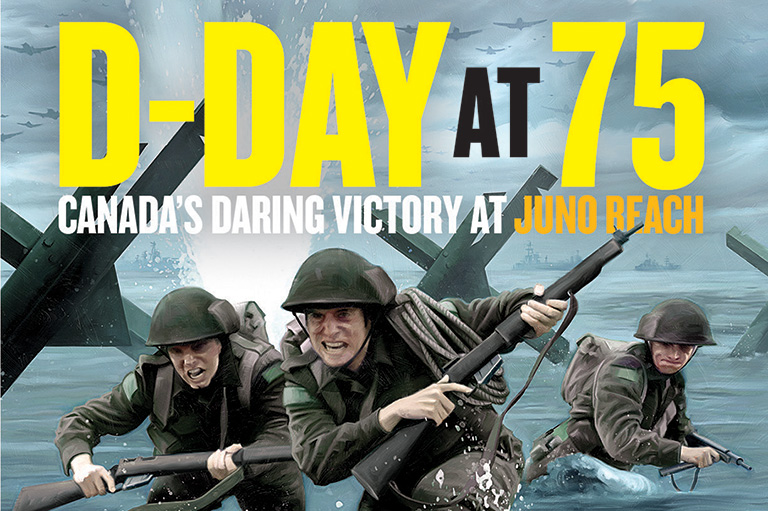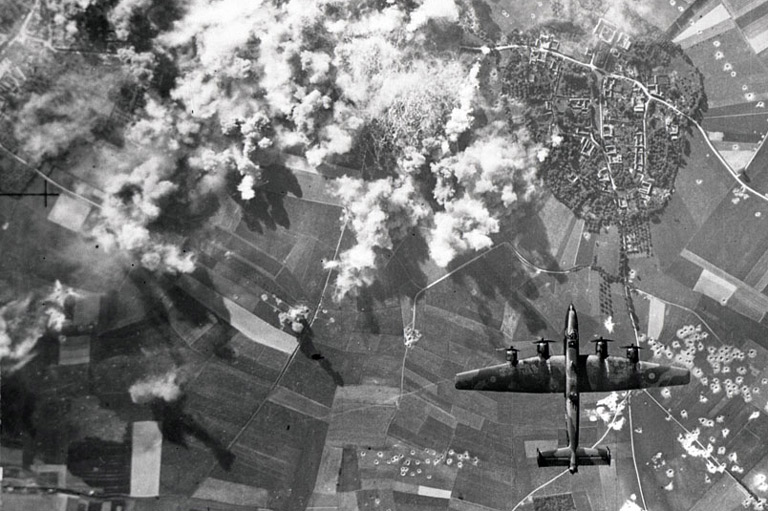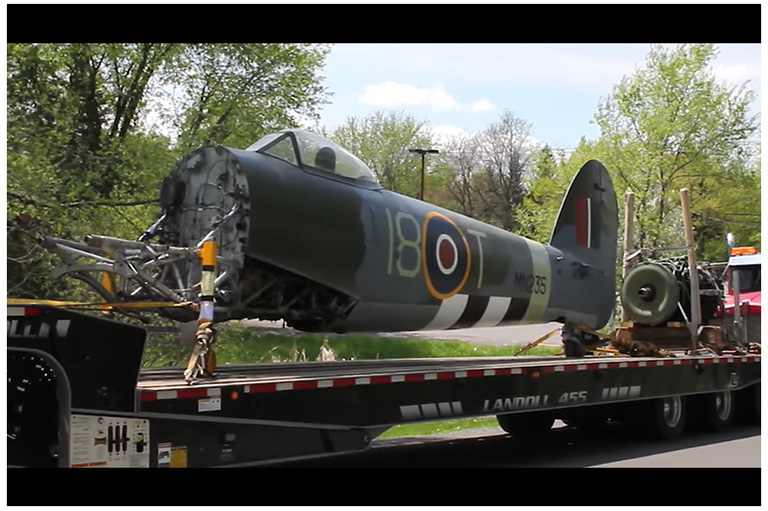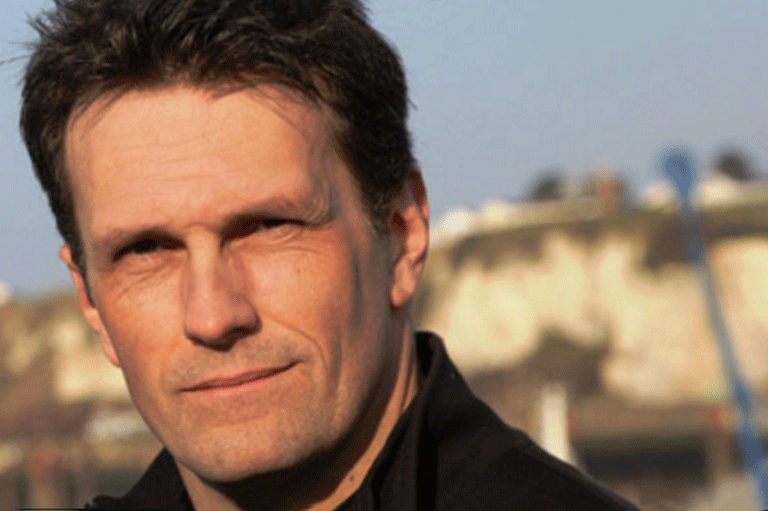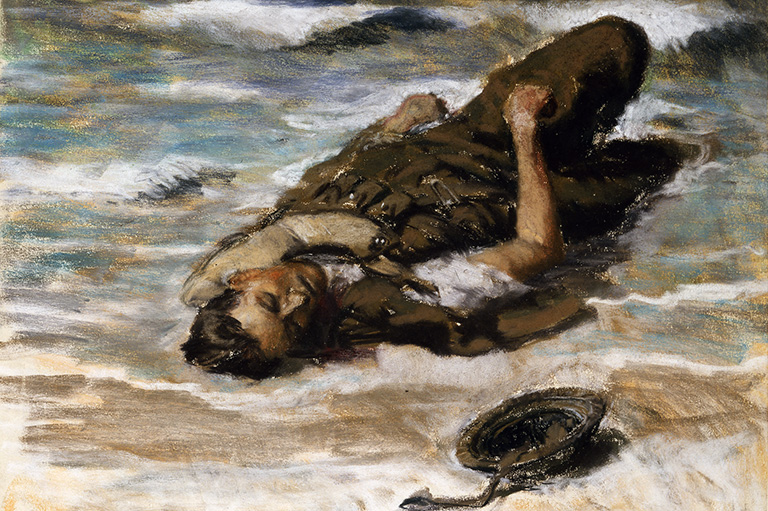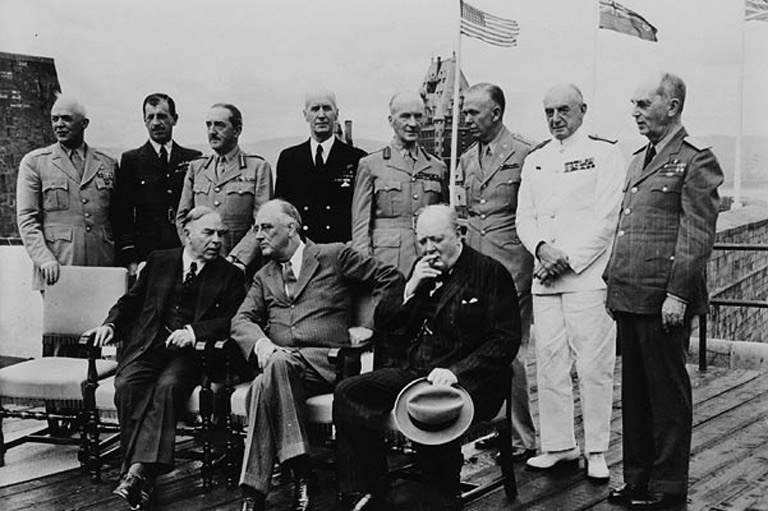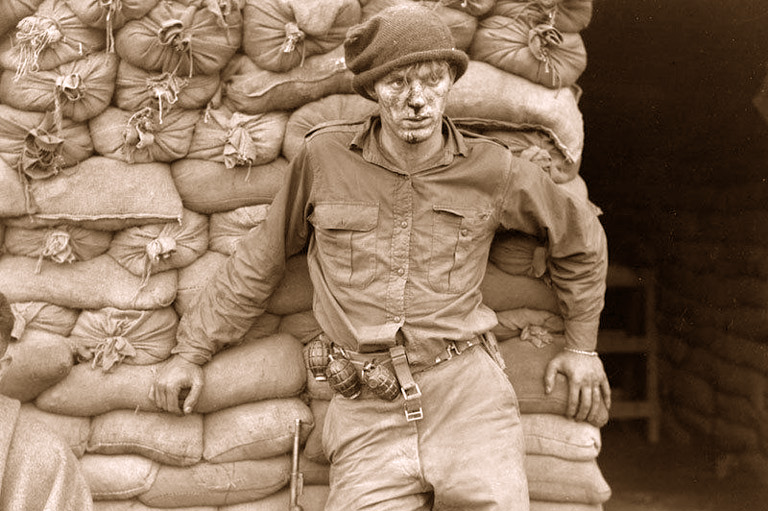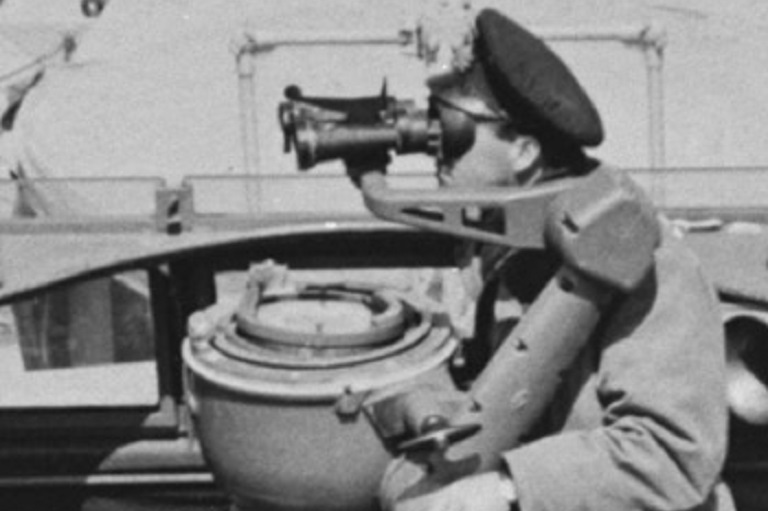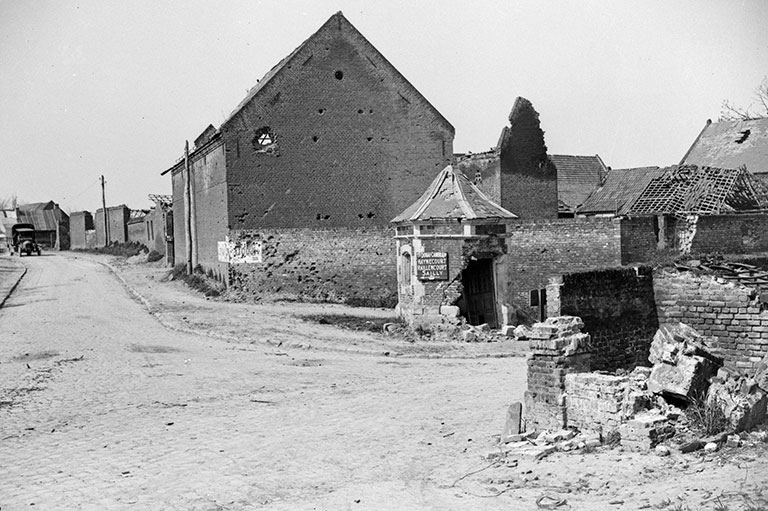Discover a wealth of interesting, entertaining and informative stories in each issue, delivered to you six times per year.
Explaining D-Day
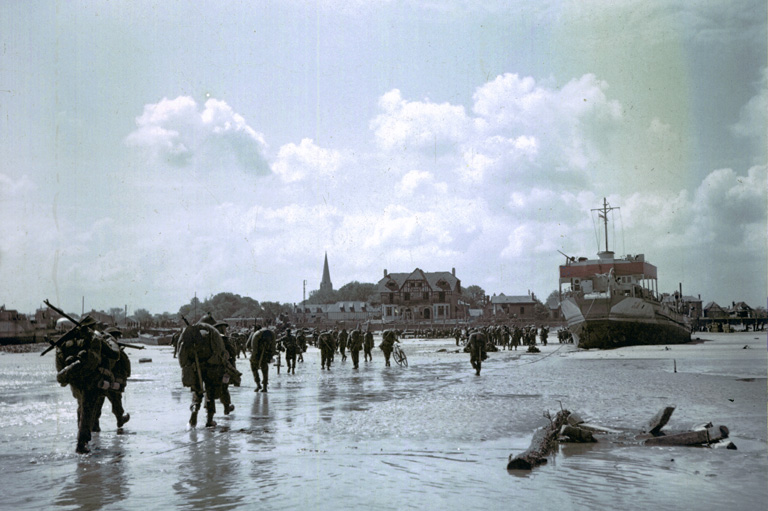
June 6, 2014, marked the seventieth anniversary of D-Day, the largest seaborne invasion in history.
The assault on the beaches of Normandy by British, American, and Canadian troops who would eventually fight their way across Europe has gone down in history as a watershed event.
The codenames of where the troops landed — Omaha and Utah for the Americans, Gold and Sword for the British, and Juno for the Canadians — remain familiar today.
The Normandy landings, part of Operation Overlord, marked the beginning of the end of six long years of conflict between Adolf Hitler’s Nazi Germany and Allied forces.
Canada’s History asked John Maker, a Second World War historian at the Canadian War Museum, some questions about D-Day.
Canada’s History: British military planners were not keen on a direct assault on the coast of Northwest Europe because the coastline was so heavily defended. What changed their minds?

John Maker: It wasn’t really that their minds were changed but the conditions changed such that by 1944 the prospect of attacking the coast was much more feasible than it had been earlier in the war.
You can take planning for the invasion all the way back to May 1940 after the surrender of France and the evacuation of British forces from Dunkirk. Churchill at that time had promised that the Allies would return and liberate the continent but at that time only British and Commonwealth forces stood alone against Nazi Germany.
The Soviet Union and the Americans were not in the fight, so the prospect of returning at that time was pretty grim. You can imagine why they wouldn’t have been very keen then.
The Axis itself really created the conditions that in many ways were conducive to the D-Day assault. The Germans attacked the Soviets in June of ’41 and then the Japanese attacked the Americans in December of ’41, bringing both the Soviets and the Americans into the war on the side of Great Britain, which of course increased the possibility of Allied victory in the war.
Nevertheless, the Atlantic wall was still a formidable obstacle and by 1944 it was even stronger and not a very welcoming target. So planners had decided that Normandy was the location most likely to succeed, for various reasons: the beaches could accommodate a buildup of forces; the German approaches to the beaches could be more easily contained then elsewhere; and it was less well-defended than other areas along the coast.
Another thing that people consider when they think of British reluctance to attack the coast was that throughout the period of planning, once the Americans come into the war, the Americans are quite impatient about attacking the continent.
They wanted to go in 1942 and 1943, and the British acted with much more caution. Churchill spoke of not wanting a repeat of a First World War battlefield and, after all, the British homeland was closest to this battlefield, so they were quite prudently cautious.
Probably the most crippling real weakness was the lack of adequate landing craft. It wasn’t until late ’43, early 1944 that there were enough landing craft to mount a large enough invasion that would be successful.
And by that time various other actions had weakened German resistance — the practice and success achieved by the Allies in North Africa and Sicily would create confidence, overall.
CH: Two years earlier, Canadians took part in the disastrous raid at Dieppe. What impact, if any, did the lessons learned at Dieppe have on the D-Day invasion?
JM: A lot of the writing that came out immediately after the war suggested that there were quite a few lessons learned at Dieppe that helped the Overlord planners. But much of this is ex post facto justificaton for the losses incurred.
If one wanted to look for lessons learned, one could more confidently look at the invasion of Sicily, Operation Husky, which took place 10th of July, 1943.
This was another amphibious assault, supported by a naval bombardment, troops coming on shore in landing craft, assaulting a defended coastline. Similarly, the Allies — the Americans and the British — had landed in North Africa in 1942, gaining more amphibious assault experience there as well.
The Canadians also took part in operations in Sicily — the 1st Canadian Infantry Division, the 1st Canadian Armoured Brigade assaulted Sicily, and there the Allies gained experience in joint planning, and the Canadians in amphibious assault.
Canadian commanders gained much experience on the ground in Sicily and mainland Italy that they brought back to Northwest Europe for the Normandy campaign.
So, I think those are better exemplars than Dieppe.
That said, the Dieppe raid did reinforce certain notions that were alive in the minds of the Overlord planners. Probably chief among these was that surprise was key. In Dieppe, surprise was lost in the early hours of the raid, so the Germans were pretty sure that an invasion was coming, which obviously didn’t bode well for the attackers.
But in Overlord you see some really, really complex operations going on to try and deceive the enemy and maintain that element of surprise. For example, you have the enormous diversion campaign taking place on the Kent coast, called Operation Fortitude (which included fake army camps, dummy airfields and other deceptions designed to make the Germans believe an invasion force would land further north and east and not in Normandy).
Also, the choice of Normandy was not, by German estimation, the most conducive to invasion.
The other factor Dieppe reinforced in the minds of planners was the need for overwhelming fire support from the air and from the sea.
Sign up for any of our newsletters and be eligible to win one of many book prizes available.
CH: How did Canada come to take on such a major role in the D-Day invasion?
JM: The development of the role for Canada in the D-Day invasion has a history going back a few years, especially following the Dunkirk evacuation, in that when Canadians began to come over to Great Britain, they took on the role of defending the British Isles, so they built up around the south coast of England and operated in a defensive and anti-invasion role from May 1940 to July 1943, when the 1st Canadian Division was detached and sent to Italy. But the bulk of Canadian forces remained in Britain for all those years.
There was a political feeling in London and Ottawa, and a rising popular feeling, that Canadian soldiers needed action.
Because it was there in such large force, the Overlord planners, almost from the beginning, determined that a large Canadian force would be part of any cross channel invasion. 2nd Division went to Dieppe, 1st to Italy leaving 3rd Division the logical next one to take part in offensive operations.
CH: On the eve of the operation, the leaders privately expressed fears that the landing would fail and there would be massive casualties. Why, after all the planning and preparation, were they still so fearful of the outcome?
JM: I think you see more of that on the British side than the American side. This concern is quite natural when you are planning an invasion on this scale. They certainly were not filled with any sense of hubris. I think they were properly concerned about the negative outcomes.
Churchill was worried about another First World War type casualty situation. Tactically, it was a very complex operation that required the co-ordination of airborne paratroopers, naval forces, air forces, amphibious forces, armour, artillery, some of which fired from landing craft offshore, which is all very difficult to co-ordinate. In short, there was much that could go wrong.
Also, politicians were still answerable to their electorates. It was politically somewhat easier for the governments of Germany and Soviet Union to send soldiers to the field than it was for western nations because the latter were answerable to their electorates.
And, an amphibious invasion of this size had never been tried and certainly the Germans had put out much propaganda that this was an impregnable Fortress Europa, as they called it. So I think these fears were realistic and prudent.
CH: Was the success of the landing due to good luck or good planning or both?
JM: The invasion met with its fair share of good luck and bad luck. But I think planning was the key to success here.
In terms of good luck, though, the weather was barely sufficient to allow a good landing, the choppiness of the sea made an invasion seem less likely to the German defenders, who were relatively slow to counterattack, and the German Commander Rommel had conveniently left Normandy for personal reasons the day before, among other examples.
In terms of planning, the assault had in one sense been going on since April 1944, when Allied strategic and tactical air forces began attacking transportation, and other targets inside and outside the invasion area. The detailed timing, the deception operation, the different types of equipment used — certainly planning was key to success, much more than luck.
CH: How prepared were the Canadians who took part?
JM: They were well-prepared. The Canadians had been in England since the winter of ’39–’40, and had been building up their forces there. They were chomping at the bit by this time to get into the action.
The commanders of the Canadian operation had gained combat experience in North Africa and Italy. And though none of the rank and file in Italy actually took part in Overlord, the army had amended its training practices in light of lessons learned there.
For example, back here in Canada, there was a marshalling base in Debert, Nova Scotia, where the army built "Ortona Town," a mockup of a little village based on their experience in Italy. They put troops through Ortona Town as part of their training before sailing to Europe, which gave them practice in street fighting, house-to-house fighting and that sort of thing.
And they had taken part in assault training with the purpose of attacking the Normandy coast for a year, beginning in the summer of 1943. They had done preliminary training in 1943, which taught them the principles of combined operations, embarking, disembarking, scaling obstacles, clearing minefields, and then basic training in the mechanics of assault landings, which took place largely in Scotland, then assault training by brigade groups and this culminated in the early months of 1944 with collective divisional assault training, which was basically a series of rehearsals based on the final plan, which by then was coalescing.
So lots of training, lots of experience, and lots of lessons learned in operations.
CH: How did the Canadians do in meeting their objectives that day?
JM: All things considered, the Canadian troops did very well.
The Canadians and the British in the Gold and Juno sector made it farther inland than any of the other invasion forces. They had managed to link up their forward units some distance inland, which was a measure of success.
However, none of the formations that took part in the operation actually achieved their objectives for day one, which for the Canadians was Carpiquet airfield and the railway running between Caen and Bayeux. The airfield was not actually captured until a month after D-Day.
The Canadian assault beach at Juno was among the more successful. Canadians began landing at around 7:30 in the morning. The assault battalions took heavy casualties in the first waves. Through strength of numbers, fire support, artillery, and armoured squadrons, by about two hours after landing they had started to come off of the beach and began landing their reserves about an hour after their initial landings.
The reserve brigade, which brought in three new battalions, came in at about 11:30 in the morning. At the end of the day, June 6, the Queen’s Own Rifles had actually captured its objective, which was short of the overall divisional objective but goes to show that some of the Canadian units were quite successful in the first hours.
CH: What impact did their success have on people on the home front in Canada?
JM: The impact at home was large. Psychologically, especially. An invasion had been expected for years. As we got closer to it, there was a sense of tension on the home front and amongst soldiers that this was coming. And there was the sense of relief that it had finally happened. When all was said and done, the casualties, while not light, were not has heavy as they could have been.
Following that, however, there did actually come casualty lists, which brought anxiety, fear, and heartbreak in many cases. We started to see these lists in the Italian campaign, but after June 6, they began to grow exponentially. Before the year was out, because of the casualties and the need for reinforcements growing to an urgent status, we see the beginning of another conscription crisis in Canada, which Prime Minister Mackenzie King had been at great pains to avoid.
Despite this, Canadians began to look to the end of the war. They looked back at the end of the First World War and how the Canadian government had not really prepared Canadian society for the return of veterans and other issues. The D-Day assault really got the ball rolling on postwar planning. So it had quite a profound impact at home.
CH: Of all the Allied victories of the Second World War, D-Day seems to be the one that lived on in the public’s consciousness, at least among Canadians, even in the present day. Why do you suppose this is so?
JM: Certainly it lived on, not just for Canadians, but for all the participating nations. It’s a big deal in Great Britain, it’s a big deal in the United States, it was a big deal for everyone, especially the successful nations.
I think the enduring memory of D-Day goes back to a couple of factors. We know this was a tough nut to crack and the fact it was a success helps to keep it in the public memory. It also acted as a release valve on public expectations and fears of the time. When it came off, it immediately took on this legendary status.
I think most importantly, for civilians anyway, it was an easy battle for them to conceive and understand. Troops had to land, to stay landed, with their backs against the wall — in this case the English Channel — so that the measure of success was easily understood.
It was also for the western nations the main show, the most decisive of all the western operations. And it was launched against the main bulk of German forces. Up to now they had been fighting in North Africa and Italy, and although important, I think in the public consciousness, people conceived the D-Day operation as more central to the ending of the war.
CH: Why is it important for us now, 70 years later, to remember D-Day?
JM: First, it was an extraordinary event in our Canadian history and in world history. And it signaled the beginning of the end of Nazi Germany.
When I think of my own experience of when I was a kid, there were First World War veterans still living and now they are all gone. It won’t be much longer before the living memory of the Second World War has also passed.
D-Day embodied the courage and determination to prevail in that war. It was fought over issues that are still alive today — such as ideology, nationalism, and injustice. It was an exceptionally difficult and hazardous military operation.
It was an operation in which Canadians took a major central part in the war. For these reasons and more, it’s important to keep the memory of D-Day.
We hope you will help us continue to share fascinating stories about Canada’s past.
We highlight our nation’s diverse past by telling stories that illuminate the people, places, and events that unite us as Canadians, and by making those stories accessible to everyone through our free online content.
Canada’s History is a registered charity that depends on contributions from readers like you to share inspiring and informative stories with students and citizens of all ages — award-winning stories written by Canada’s top historians, authors, journalists, and history enthusiasts.
Any amount helps, or better yet, start a monthly donation today. Your support makes all the difference. Thank you!
Themes associated with this article
You might also like...

Canada’s History Archive, featuring The Beaver, is now available for your browsing and searching pleasure!


